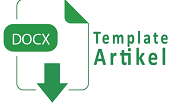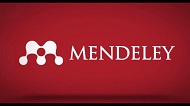Peningkatan Pengetahuan kesehatan Reproduksi siswi di SMKN 24 Jakarta Timur
Abstract
Keywords: behavior, healthy reproduction, female students, SMKN 24
Full Text:
PDFReferences
Manuba, I.B.G. Memahami Kesehatan Reproduksi Wanita. Jakarta: EGC: 2009
Hurd, Tracey L. Nurturing Children and Youth: A Developmental
Guidebook.USA: UnatirianUniversalist;2005
Zumrotus Solekha, Seksualitas Bagi Remaja dalam Perspektif Islam, Skripsi Fakultas
Tarbiyah dan Keguruan UIN Raden Intan Lampung, 2018
WHO;Social determinant of Sexual and Reproductive Health : Informing Future
Research And Programme Implementation Avalable online
at:www.who.int/Ent/Social_Determinant/Tools/WHO_Social Determinants Sexual
Health_2010.pdfpage=121, Diakses tanggal 10 April 2023
Gorrese, A., & Ruggieri, R. (2012). Peer attachment: A meta-analytic review of gender
And age differences and associations with parent attachment. Journal of Youth and
Adolescence, 41(5), 650–672.
Poltekes Depkes Jakarta 1:Kesehatan Remaja Problem dan solusinya:Jakarta: Salemba
Medika; 2012
Notoatmodjo,Soekidjo.Promosi Kesehatan dan Perilaku kesehatan Jakarta;Rineka
Cipta;2012
Infodatin. Sexual Health Reproduction. Kementrian Kesehatan Republik Indonesia:
Pusat Data dan Infromasi Kementrian Kesehatan Republik Indonesia; 2012
Sarwono, S.. Psikologi Remaja. Jakarta: PT. Raja Grafindo Persada;2011
World Health Organization. Defining SexualHealth: Report of technical
consultation on sexual health, Sexual health document series. Geneva2006.dikutip
oleh Nor DKK,Panduan Kesehatan Reproduksi Remaja,CV Mine Yogyakarta;2020
Potter, Patricia A. & Anne G. Perry. 2009. Fundamental of Nursing. Jakarta:
Salemba Medika
Hapsari.2019 Buku Ajar Kesehatan Reproduksi Modul Kesehatan Reproduksi
Remaja.Malang.Wineka Media
DOI: https://doi.org/10.52643/pamas.v7i4.3536
Refbacks
- There are currently no refbacks.
Copyright (c) 2023 Jurnal Pelayanan dan Pengabdian Masyarakat (Pamas)

.pdf_1.png)











